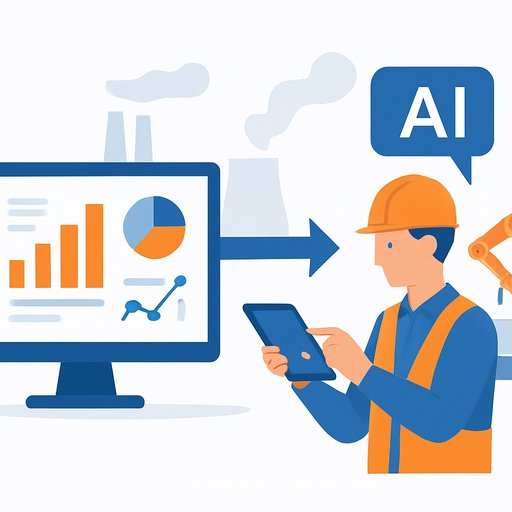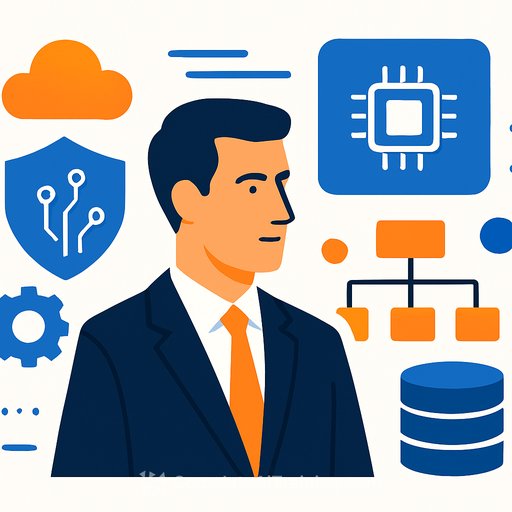Agentic AI for Operations: From Content to Autonomous Workflows
Agentic AI has moved past content creation and into hands-on execution. Systems can now plan, act, and improve without constant human supervision. That shift is already influencing how CIOs and operations leaders set priorities, as seen at major events like Forbes' CIO gatherings. Interest is high across the US tech sector because the outcomes are practical: faster cycles, fewer bottlenecks, and cleaner decision loops.
What Agentic AI Means for Ops
Agentic AI refers to systems with autonomy-tools that make decisions and complete tasks end-to-end. In operations, that means fewer manual touchpoints and more time spent on strategy, exceptions, and customer commitments. Teams get a system that handles routine work while flagging risks and opportunities in real time.
- Automate repetitive tasks: ticket triage, PO matching, data syncs, escalations.
- Run playbooks: detect an issue, choose a fix, execute, and confirm the result.
- Improve with feedback: learn from outcomes and refine the next action.
Where It Delivers Today
Finance, healthcare, and logistics are already benefiting, with clear wins in accuracy and speed. For operations leaders, supply chain and service delivery are prime candidates. The tech isn't magic-it thrives where you have data, clear objectives, and defined guardrails.
- Logistics and supply chain: demand sensing, dynamic rerouting, and inventory balancing with minimal human intervention.
- Procurement: autonomous 3-way match, vendor follow-ups, and exception handling for pricing or lead-time gaps.
- Customer operations: SLA-aware ticket routing, root-cause analysis, and first-action resolution across channels.
- IT and security operations: after-hours incident response playbooks with audit trails and safe rollbacks.
Integrating Agentic AI into Your Stack
Adoption works best when scoped tightly, measured clearly, and expanded by proof. Treat it like a new team member: give it access, set limits, and measure performance. Keep humans in the loop where risk is high.
- Pick one process with high volume and clean data (e.g., invoice exceptions or order-to-cash alerts).
- Define guardrails: allowed actions, approvals, data sources, and escalation paths.
- Run in a sandbox, then limited production with shadow mode before full autonomy.
- Track KPIs: cycle time, OTIF, backlog aging, cost-to-serve, MAPE, SLA adherence.
- Operationalize monitoring: audit logs, drift alerts, rollback plans, and quarterly reviews.
AI Trends 2026: What Ops Should Expect
- More autonomy in routine processes, with agents coordinating across apps and teams.
- Stronger personalization for customers and internal users-faster responses and tighter SLAs.
- Predictive playbooks that switch operations from reactive firefighting to proactive prevention.
- Deeper integration with ERP, WMS, TMS, and ITSM platforms for end-to-end execution.
As these trends mature, expect tighter loops between forecasts, decisions, and actions-and fewer handoffs across tools.
Governance, Risk, and Controls
Autonomy demands discipline. Set clear permissions, document actions, and keep humans approving higher-risk steps. Use standardized risk frameworks and internal policies so the rollout scales without surprises.
- Adopt a risk model for AI operations and align with your existing control environment.
- Isolate environments and data, enforce least-privilege access, and log every action.
- Review bias, drift, and vendor dependencies on a schedule-treat them like any critical system.
For structure, the NIST AI Risk Management Framework is a solid reference point. See the framework here.
Industry Sentiment
Technology leaders see clear upside in efficiency and innovation. At CIO forums, the conversation has moved from "Can it work?" to "Where does it fit first?" As one industry analyst, John Kovac, put it on X: "Agentic AI represents the future of business automation, offering unprecedented opportunities for growth and efficiency."
Coverage from major events like the Forbes CIO gathering reflects this momentum. You can explore their CIO insights here.
How Operations Teams Can Get Ready
- Audit processes for automation potential: high volume, clear rules, measurable outcomes.
- Map the tech stack: APIs, data quality, identity and access control, and logging.
- Stand up an "AI change board" to own standards, approvals, and reviews.
- Upskill the team: prompt patterns, workflow design, evaluation methods, and risk basics.
- Pilot with a 6-8 week timeline and a defined go/no-go based on your KPIs.
If you need structured learning for different roles, see our AI courses by job for practical upskilling paths.
Final Thoughts
Agentic AI is changing how operations teams work-fewer clicks, faster cycles, and decisions that stick. As 2026 approaches, expect broader integration, more proactive models, and tighter links between data and action. For leaders, staying current isn't optional.
Meyka, with its AI-driven platform, offers real-time insights and predictive analytics to support decision-making as these systems mature.
FAQs
What is Agentic AI?
Agentic AI refers to AI systems that can perform tasks autonomously, without constant human oversight, improving efficiency and decision-making in business operations.
How is Agentic AI used in business?
Teams use it to automate routine tasks so people can focus on strategy and exceptions. It reduces cycle times, improves accuracy, and lowers cost-to-serve across core processes.
What are the trends in AI for 2026?
Expect enhanced personalization, stronger predictive analytics, and deeper integration across systems-moving operations from reactive fixes to proactive playbooks.
Disclaimer
The content shared by Meyka AI PTY LTD is solely for research and informational purposes. Meyka is not a financial advisory service, and the information provided should not be considered investment or trading advice.
Your membership also unlocks:






